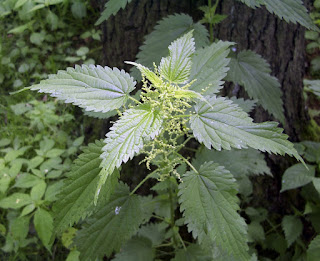Latin Name:Rosmarinus officinalis
Parts used: The whole plant
Identification Notes:A woody, perennial herb with fragrant, evergreen, needle-like leaves and
white, pink, purple, or blue flowers, native to the Mediterranean
region. Charming rosemary herb is the perfect potherb to have in your
kitchen garden. The plant is one of the recognized herbs for its
note-worthy health benefiting phyto-nutrients, anti-oxidants, and
essential acids. It is used as decorative plant in gardens and has many
culinary and medical uses. The plant is said to improve the memory. The
leaves are used to flavor various foods, such as stuffing and roast
meats.
How used:The culinary uses are endless, and honestly we use a lot of it, for fun sometime if you have a huge plant, cut off some sturdy branches and use them for skewers on the BBQ for shrimp or whatever floats your boat.
Medicinal uses: This list has much more listed than just medicinal uses and honestly I can not verify most of these till I have tried them myself. I have turned the ones I can verify into Bold and Italics.
1. You can rinse your hair with rosemary water.
Sample Recipe Guide:
*In a large bowl put 2 tbsp of dried rosemary leaves and 1 tbsp of
chamomile. (If your hair is blond, use 2 tbsp of chamomile and 1 tbsp or
rosemary).
*Strain it into another container or a jug and use it after shampooing
as the final rinse. Gently massage your hair, comb and let them dry.
Repeat after 5-6 shampooing for better results.
2. You can use rosemary as ingredients for a mask recipe that treat
the hair from the roots to the ends, strengthens and tones the scalp.
3. You can use rosemary to stimulates the synthesis of the main nerve
growth factor, NGF (Nerve Growth Factor), a factor that helps prevent
damage and cell death.
4. You can place rosemary on the body to stimulates the blood circulation and enhance memory.
5. You can smell rosemary to enhance mental capacity.
6. You can use rosemary to stimulate the factor of sensual desire.
7. You can use rosemary in a massage blend to relax the body and rejuvenates the mood.
8. You can use rosemary as an alternative to a magic potion.
9. You can use rosemary in a compress to relieve headache.
10.
You can infuse rosemary to relieve headache.
11. You can rub rosemary mixture on the forehead to relieve the pains of the head.
12. You can use it as basic ingredients to make a medicinal syrup.
13. You can use it in making your own rosemary bath salts.
14. You can bath with rosemary for healthy skin.
15. You can use it as basic ingredients for a lotion.
16. You can spread rosemary leaves in front of your doors and windows to ward of poisonous animals such as snakes and scorpions.
17. You can make your own spray repellent with rosemary.
18.
You can use it in a bake potatoes with rosemary.
19.
You can use rosemary for flavoring foods cooked with wine or garlic.
20.
You can use rosemary to flavor salad, bakes potatoes, grilled meats, poultry and fish.
21.
You can use it to make medicinal vinegar.
22. You can use rosemary to protect you from infection of any plaque disease.
23. You can burn rosemary twigs in a fireplace to help disinfect the air in your surroundings.
24. You can use rosemary twigs for steaming.
25.
You can grow it in any soil, even if it is rocky.
26. You can burn twigs or leaves as an alternative to incense to purify the place.
27. You can put little packet of rosemary under the front door mat to
capture any negative energy of you and your visitors to prevent it
entering the interior of the house.
28. You can use rosemary to make an herb and juice cocktail.
29. You can use rosemary in combination with other tonic herbs to make a powerful energy drink.
30. You put rosemary leaves and flowers under your pillow to have sweet dreams.
I am sure some of the above are a bit sketchy I doubt it will keep snakes at bay but I have never had an issue with them getting in the house anyway so....And under my pillow for sweet dreams? No I don't think so but a cup of Rosemary tea is pretty awesome. And as an alternative to a magic potion? WOAH.....Way past my pay-grade.





























